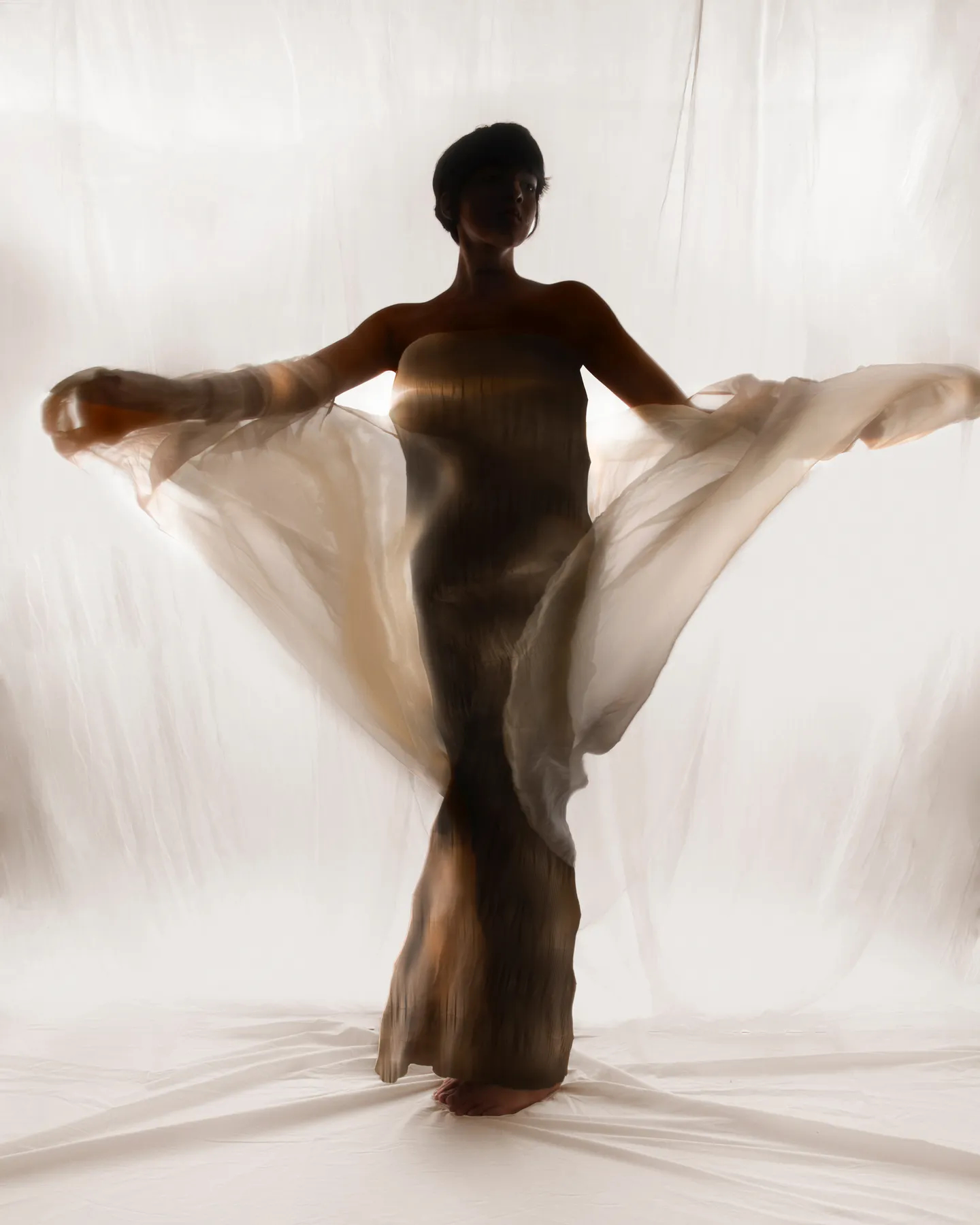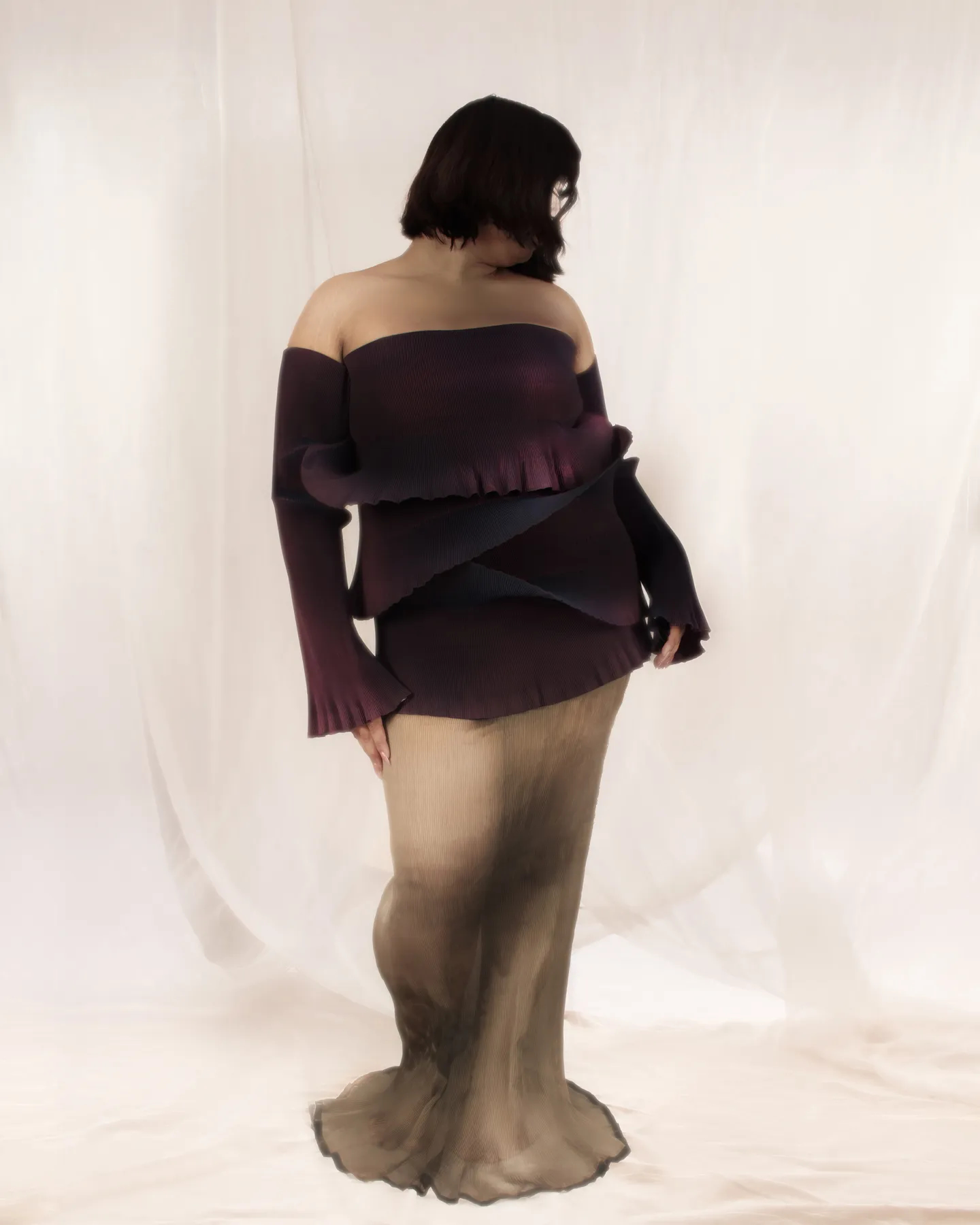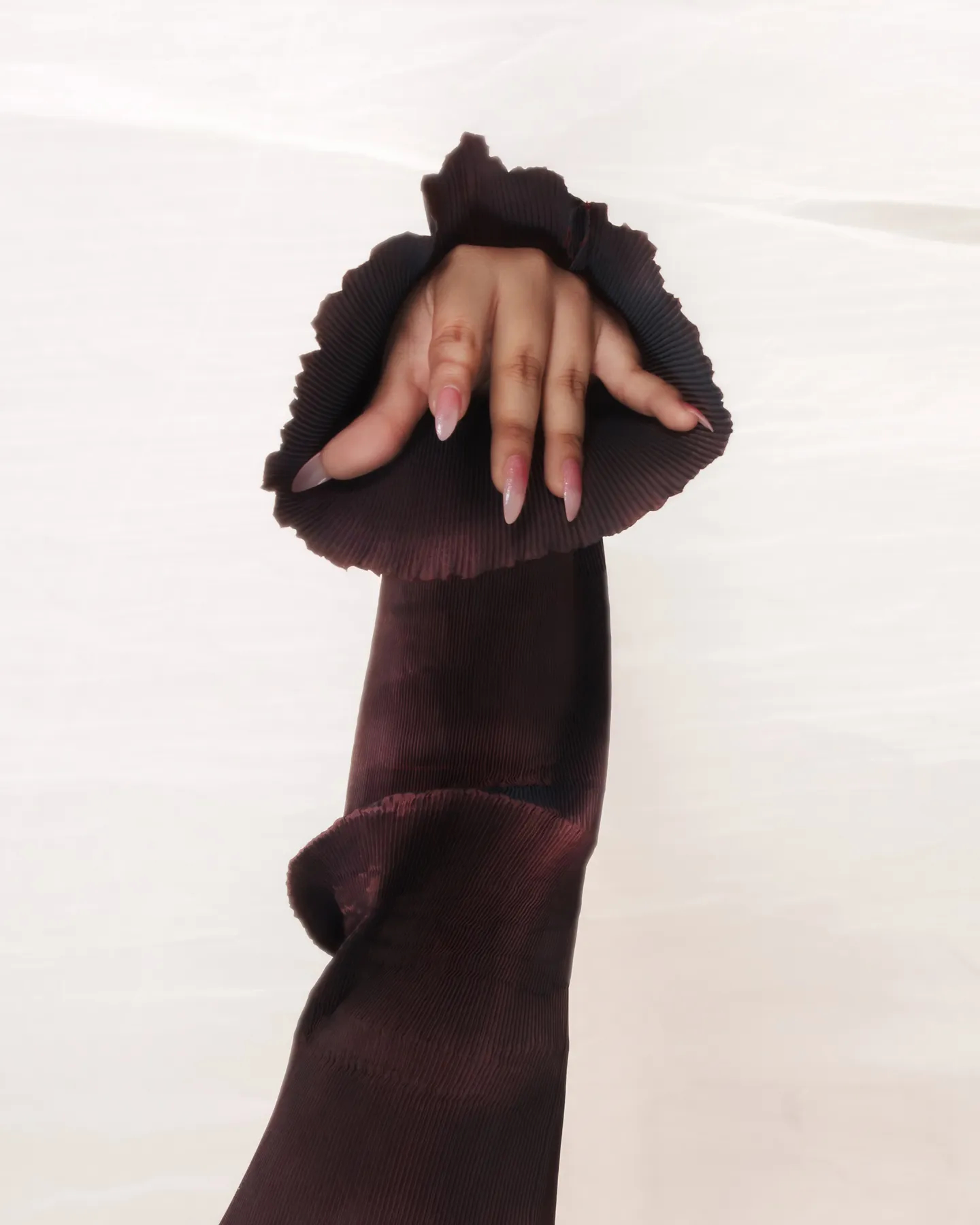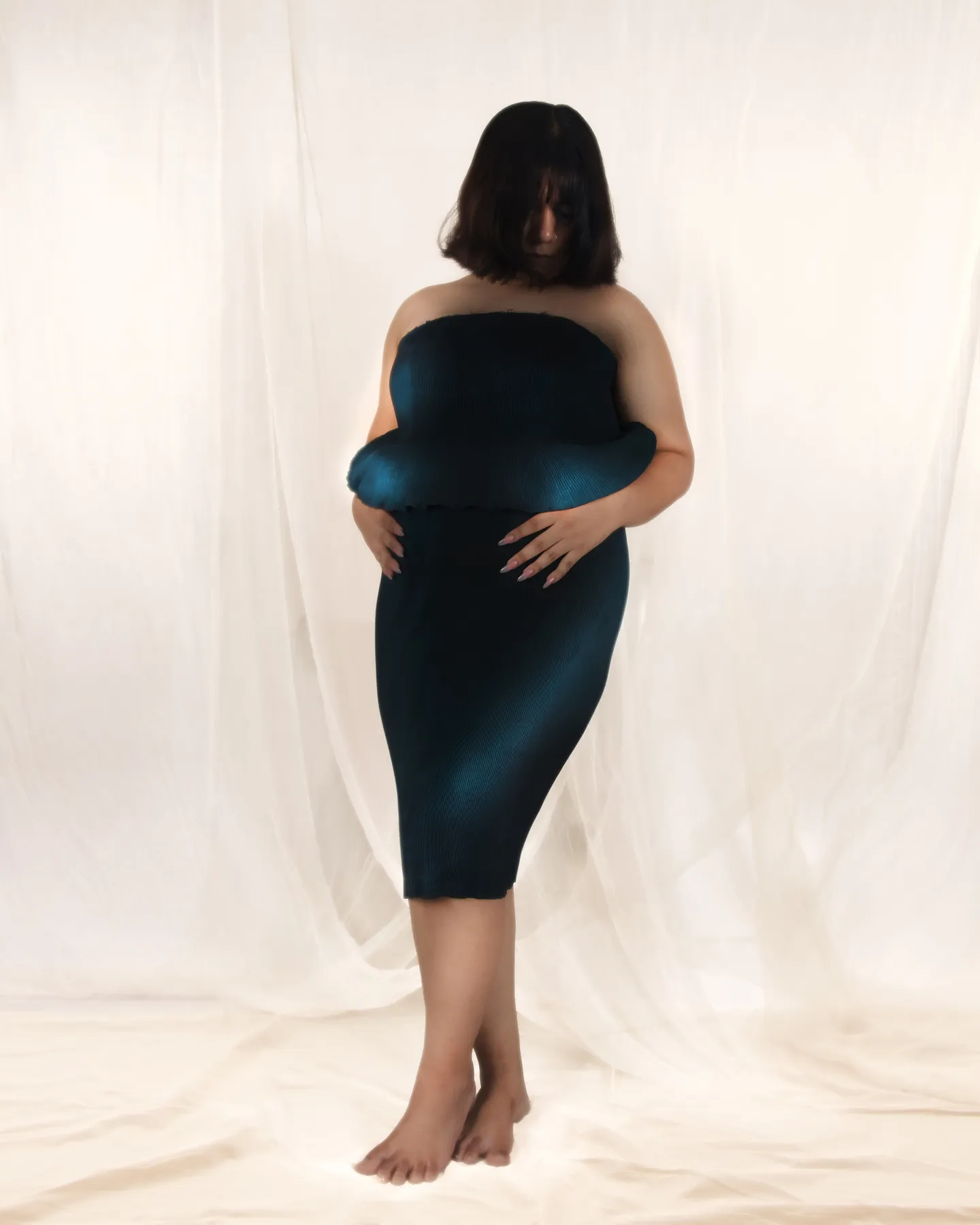Fashion Forward: Anya Wahi
Five graduates from the National Institute of Fashion Technology (NIFT), Delhi, walk us through their final-year projects
Anya Wahi
Degree: Bachelor of Design (Fashion Design)
Home town: Hyderabad

How would you introduce your graduate collection?
More than anything else, my collection is an inquiry into how I’ve processed my transition. In June last year, when I came out as a transgender woman, I had no idea how my life would unfold. But today, about a year later, I think I know.
Changeling Vol. 1 is a narrative about growing into oneself, and it navigates the complicated ideals of beauty, womanhood and the image of the idealised body through garments that are transmutative, sculptural and inclusive. The whole collection is made out of deadstock polyesters that were upcycled and elevated through micro pleating and draped into forms that both follow and challenge the curves of the human body.
What are some underlying concepts — the primary inspirations — behind your collection?
Everything that I have learnt about the world as Anya has shaped this collection, right from when I began the design process. In that sense, my transition has been this almost overbearing, overwhelming force in my life.
I have also been fascinated by fay folklore from a very young age, and that has inspired the way I’ve used colours and textures. The diaphanous quality of some of the fabrics lends an ethereal look that conjures up in my head images of a gossamer spider-silk gown worn by mythical fairy queens. Each look tells the story of the birth of a distinct fairy queen, whether she has risen from an enchanted lake, bloomed from a lily or emerged from a chrysalis.

Tell us about the techniques you have used, your design ideology, and the process and details behind your favourite look from the collection.
A lot of my work has been centred around the body, and this collection is no different. My favourite design from the collection has to be the burgundy-and-champagne look modelled by me. It was born from some very specific emotions.
As a transgender woman who is currently in the middle of legally transitioning, there are so many instances wherein I have to prove my womanhood, my transness, and I am genuinely exhausted by it. To me, this look says, “I am who I am, and I am unafraid of being perceived any other way.” It has taken me a while to get there.
Conversations around personal representation are becoming increasingly prominent in today’s fashion world. In that regard, how would you say your work reflects who you are?
This may come off as a touch too conceited, but I am my own muse. My transness is at the centre of this collection. The reason I am vocal about it is that throughout history, and especially today, trans voices across the world have been ruthlessly and mercilessly squashed. I can confidently say that the quality of my life has declined since transitioning because there is no institutional support, in terms of education, healthcare or governance, and I have suffered first-hand at the hands of bureaucracy, negligence and cis-heteronormativity. And this is despite the privilege I enjoy — my background, and the absolute and overwhelming support from my family.
Fashion is just as convoluted; there are hardly any trans designers at the moment. To quote Hari Nef, who has inspired me for years now: “I don’t think fashion is interested in trans issues. I can’t think of many fashion institutions or artists who have addressed ‘trans issues’ by name, can you? How many openly trans people are getting major work in the industry — models, designers, photographers? Can you count them on more than one hand? Fashion is having a moment with trans aesthetics, not trans issues.” I feel exactly the same way about it, and many trans people that I have interacted with do too.
This is also why I have very consciously stayed away from certain ways that the trans body is looked at, talked about or represented. I find it quite tasteless and extremely inappropriate to fetishise an identity like that, which is why I am not using my work to talk about the purely fetishised physical aspects of being a trans woman, like how much my breasts have grown since I started on hormones. There is some maturing that needs to happen on the part of the audience before trans creators can be expected to have these conversations. I hope my collection is one among many that encourage that maturation by talking about the emotions that trans people often feel because we are people first, trans second.

Which format would best translate your work to the consumer — physical retail spaces, online stores, demi-couture, or purely as a form of visual consumption through images only?
I don’t believe fashion is still rigid about demarcating spaces for all these segments separately. Some pieces in my collection would do really well as ready-to-wear; there are others that would be ideal to present to clients to be made as per their requirements; and there are others that make for some fabulous imagery. However, what I’ve explored is an idea, a narrative in its rawest form, and I think it’s an interesting concept to see how even deadstock fabrics can be reclaimed to create garments that don’t look like they might have been upcycled.
Where do you think fashion is going with AI and the metaverse?
Artificial intelligence is tricky; there needs to be more public discourse on the morality of creating a system that claims personhood, and I don’t think that the people who are pumping money into AI are considering that. Fashion is, at the end of the day, a business.

How has the shift towards digital fashion affected your creative process?
What people don’t know about my collection is that the toile of each piece was converted to a vector file that was used to laser cut the final fabric. The result is a clean edge that doesn’t require further processing and has a superior finish.
Do you feel digital design is the answer to fashion’s waste problem?
Fashion doesn’t have a waste problem; it is the waste problem. So, no, I don’t think digital design is the answer. A major shift needs to happen in the way fashion is consumed. And if I can be frank, people need to stop trying to ease the guilt that comes with participating in this vicious cycle of wearing clothes and disposing of them by buying into “sustainable fashion” — it’s just a marketing buzzword.
What are the driving forces behind the silhouettes in your collection and how have you tried to achieve them?
One of my favourite artists happens to be Georgia O’Keeffe, and many of the silhouettes take inspiration from her paintings. I have also tried to follow the body and break away from it in unexpected places to both generate interest and challenge ideals. I’ve done this through draping micro-pleated fabrics and manually heat-setting them in the forms and shapes that they take.